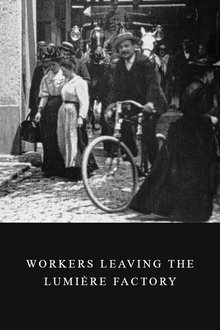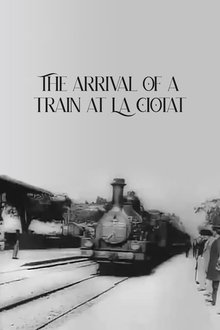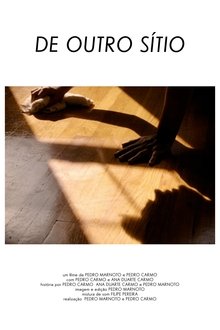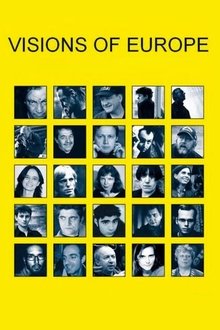In 1886, the United States Department of Agriculture ambitiously commissioned watercolour illustrations of over 3,000 fruit cultivars. In 2019, this collection was digitized. Mesmerizingly detailed, these images now tell an incredible story about the little-known talent of botanical illustrators, and how their work planted the seeds for intellectual ownership over agricultural innovations.
Related Movies

Believe It or Not (Second Series) #4 (1931)
Billy falls asleep and dreams Robert L. Ripley takes him on a tour of Believe-It-or-Not land to see many oddities. Vitaphone No. 1320.

Believe It or Not (Second Series) #5 (1932)
Robert Ripley shows a pretty blond a shrunken head and an iron execution chamber. Vitaphone No. 1336.

Believe It or Not (Second Series) #6 (1932)
Robert Ripley draws and shows movies to train passengers. Vitaphone No. 1346.

Believe It or Not (Second Series) #7 (1932)
Robert Ripley gives a show aboard a luxury liner at sea, starting with drawings discussing the origin of the "fathom" and Christopher Columbus being banished from America. Vitaphone No. 1361.

Workers Leaving the Lumière Factory (1895)
Working men and women leave through the main gate of the Lumière factory in Lyon, France. Filmed on 22 March 1895, it is often referred to as the first real motion picture ever made, although Louis Le Prince's 1888 Roundhay Garden Scene pre-dated it by seven years. Three separate versions of this film exist, which differ from one another in numerous ways. The first version features a carriage drawn by one horse, while in the second version the carriage is drawn by two horses, and there is no carriage at all in the third version. The clothing style is also different between the three versions, demonstrating the different seasons in which each was filmed. This film was made in the 35 mm format with an aspect ratio of 1.33:1, and at a speed of 16 frames per second. At that rate, the 17 meters of film length provided a duration of 46 seconds, holding a total of 800 frames.

Without Mercy (2019)
The animated documentary - a mix of live-action footage and animation - tells of the brutal everyday life in the orphanages of the 60s / 70s. Often led by Christian orders, more than one million children were physically and physically abused here. The anonymous protagonist tells of her childhood and her very personal struggle against the nuns' arbitrariness and their ruthless authority.

The Beloved Child, or I Play at Being a Married Woman (1971)
A young mother, alone with her daughter, confides in a friend who happens to be the director herself. Chantal Akerman, although she sympathizes with the mother, does not say a word.

Believe It or Not (Second Series) #8 (1932)
Robert Ripley presents a well-dressed cocktail party an assortment of drawings and film clips showing the world's youngest parents and the largest bible. Vitaphone No. 1362.

Believe It or Not (Second Series) #9 (1932)
In this short film, Robert L. Ripley introduces narrator Leo Donnelly who presents various "Believe It or Not" oddities from around the world as gathered by Ripley. Segments include a NYC clothier that caters to very large men and circus elephant grooming. Vitaphone No. 1363.

Believe It or Not (Second Series) #10 (1932)
This omnibus of film clips include a Savanna golf course made from Civil War trenches, wooden Indians used ourside cigar stores, an American Indian artist from South Dakota who paints upside down, the smallest residence house, a Bronx River statue with mysterious Civil War origins, the Ocean Grove community in New Jersey that closes on Sundays and a futuristic automated parking garage. Vitaphone No. 1364.

Papa – Notes on Life and Death (2023)
The director’s diary told in still images of a dramatic period in which he becomes first a father and then almost loses the love of his life when his girlfriend – filmmaker Lea Glob – goes into a coma after giving birth.

The Arrival of a Train at La Ciotat (1896)
A group of people are standing along the platform of a railway station in La Ciotat, waiting for a train. One is seen coming, at some distance, and eventually stops at the platform. Doors of the railway-cars open and attendants help passengers off and on. Popular legend has it that, when this film was shown, the first-night audience fled the café in terror, fearing being run over by the "approaching" train. This legend has since been identified as promotional embellishment, though there is evidence to suggest that people were astounded at the capabilities of the Lumières' cinématographe.

A Day in the Life of a Consumer (1993)
The film shows one day from waking up in the morning all the way to waking up again the next morning. The everyday situations that many commercials are made of, the little dramas that they create and solve through the product or service they sell, are stitched together into one day. This is a film about the everyday in (German, or Western-European) society because the commercials are part of the everyday of most people (everyone who watches television) and they depict an ideal image of society. The film abundantly uses repetition as an editing technique, in visual ways as described above, but also because commercials can be read in different ways. For instance, Brat baking foil shows up at the evening dinner sequence, when an ovendish is put on the table, and again later on in the sequence about going out to a classic concert, because the clip has classic music.

Pestilent City (1967)
Pestilent City covers Manhattan from South to North, from Times Square to Harlem, finding along the way ever more poverty, violence, rage and tragic drunkenness.

Of Another Place (NaN)
On a Summer afternoon, Pedro packs the last few boxes before having to leave his apartment in New York. 12 years ago, Pedro and Ana had arrived in America from Portugal, in search of a dream. Now, Ana's voice describes, from the other side of the ocean, that same country to which they are returning. As the rooms are emptied, Pedro bids farewell to one life, welcoming another. But the dream that brought him will remain forever in the city that never sleeps, awaiting his return.

Did Britain Murder Hanratty? (1970)
A documentary covering the trials of James Hanratty, perceived to be wrongly accused at the time and one of the final eight people in the UK to be executed before capital punishment was effectively abolished.

Faraway (2021)
After being estranged from his family, we observe a young man over four seasons and from far away as he navigates his solitude – all the while attempting to reconnect with his mother.

Esperança (2019)
Esperança, 15, has just arrived in France from Angola with her mother. At Amiens station, they don’t know where to sleep and look for someone who can help them.

Yellow Trails (2020)
An identity picture and the memory of Contla village through its Día de Muertos festivity. Celebration where the making of traditional bread, an offering colocation, and the embellishment of their family get mixed with mysticism and the yearning of the people community, preserving a tradition that interweaves for moments as a remembering in the México's heart.
